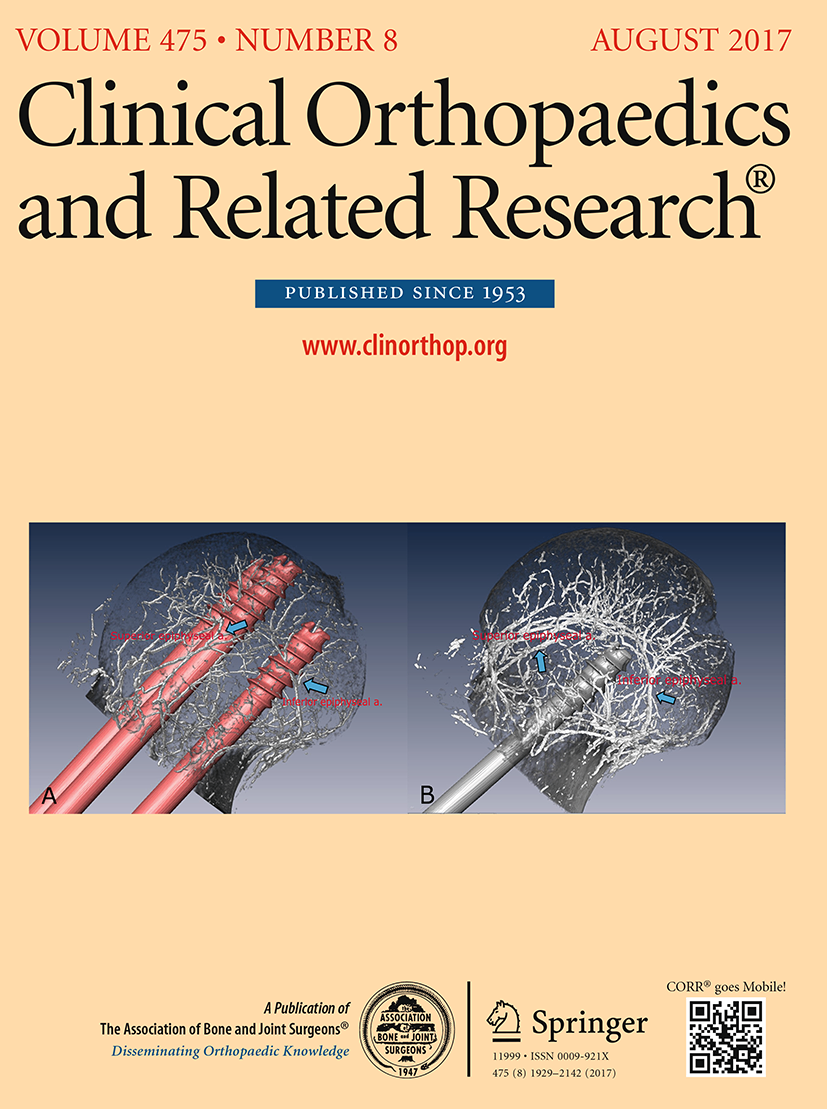
Large femoral heads lead to fewer dislocation rates after revision THA than standard heads

Large femoral heads lead to fewer dislocation rates after revision THA than standard heads
The Frank Stinchfield Award: Dislocation in revision THA: do large heads (36 and 40 mm) result in reduced dislocation rates in a randomized clinical trial?
Clin Orthop Relat Res. 2012 Feb;470(2):351-6. doi: 10.1007/s11999-011-2146-xDid you know you're eligible to earn 0.5 CME credits for reading this report? Click Here
Synopsis
184 patients were randomized to examine the potential of large femoral heads in decreasing the dislocation rate following revision total hip arthroplasty (THA). Patients received either a standard head (32 mm) or a large head (36 or 40 mm), and were assessed at a mean follow-up of 5 years for dislocation and 2.2 years for quality of life (QOL). Results indicated that dislocation rates were lower in patients who received the large head, while there was no difference in QOL between the two groups.
Was the allocation sequence adequately generated?
Was allocation adequately concealed?
Blinding Treatment Providers: Was knowledge of the allocated interventions adequately prevented?
Blinding Outcome Assessors: Was knowledge of the allocated interventions adequately prevented?
Blinding Patients: Was knowledge of the allocated interventions adequately prevented?
Was loss to follow-up (missing outcome data) infrequent?
Are reports of the study free of suggestion of selective outcome reporting?
Were outcomes objective, patient-important and assessed in a manner to limit bias (ie. duplicate assessors, Independent assessors)?
Was the sample size sufficiently large to assure a balance of prognosis and sufficiently large number of outcome events?
Was investigator expertise/experience with both treatment and control techniques likely the same (ie.were criteria for surgeon participation/expertise provided)?
Yes = 1
Uncertain = 0.5
Not Relevant = 0
No = 0
The Reporting Criteria Assessment evaluates the transparency with which authors report the methodological and trial characteristics of the trial within the publication. The assessment is divided into five categories which are presented below.
3/4
Randomization
2/4
Outcome Measurements
4/4
Inclusion / Exclusion
2/4
Therapy Description
4/4
Statistics
Detsky AS, Naylor CD, O'Rourke K, McGeer AJ, L'Abbé KA. J Clin Epidemiol. 1992;45:255-65
The Fragility Index is a tool that aids in the interpretation of significant findings, providing a measure of strength for a result. The Fragility Index represents the number of consecutive events that need to be added to a dichotomous outcome to make the finding no longer significant. A small number represents a weaker finding and a large number represents a stronger finding.
Why was this study needed now?
Dislocation following revision THA is one of the most common complications. While larger heads have become available to surgeons (where it's head-to-neck ratio could prevent dislocation), there are very few studies that address the effect of head size in revision THA. Hence, this study aimed to determine whether a large femoral head (36 or 40 mm) would result in a decreased dislocation rate compared to a standard head (32 mm) in revision THA.
What was the principal research question?
Will a large femoral head result in a reduction in dislocation rates after revision THA compared to a standard head, assessed over 5 years?
What were the important findings?
- The rate of dislocation was lower for the large-head group (1.1% or 1 of 92) than for the standard-head group (8.7% or 8 of 92) (p = 0.035).
- Of the 8 patients with dislocations in the standard-head group, 5 required no further surgery while the other 3 required further surgery to stabilize the hips; the one patient in the large-head group who was dislocated required further surgery to stabilize the hips.
- Improvements in all QOL scores from preoperative values were observed in both groups; the only score that was different between the two groups at follow-up was the SF-36 mental component, with the large-head group scoring higher than the standard-head group (p = 0.043).
What should I remember most?
This study demonstrated that there was a significant decrease in dislocation rates when larger 36- or 40-mm heads were used in comparison to standard 32 mm heads. However, no significant difference was observed in terms of quality of life between both groups (except the SF-36 mental component, which favoured the large-head group).
How will this affect the care of my patients?
The results of this study suggest that large-heads should be routinely selected when performing revision THA. However, the effects of using larger heads must be further studied to better understand long-term outcomes of these prostheses.
Learn about our AI Driven
High Impact Search Feature
Our AI driven High Impact metric calculates the impact an article will have by considering both the publishing journal and the content of the article itself. Built using the latest advances in natural language processing, OE High Impact predicts an article’s future number of citations better than impact factor alone.
Continue



 LOGIN
LOGIN

Join the Conversation
Please Login or Join to leave comments.